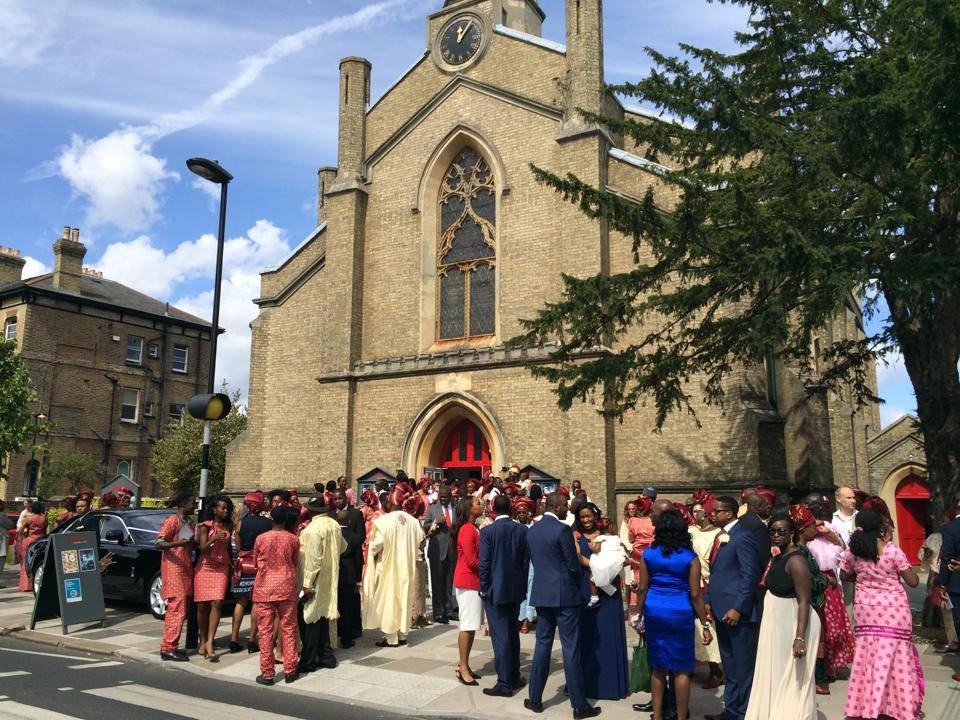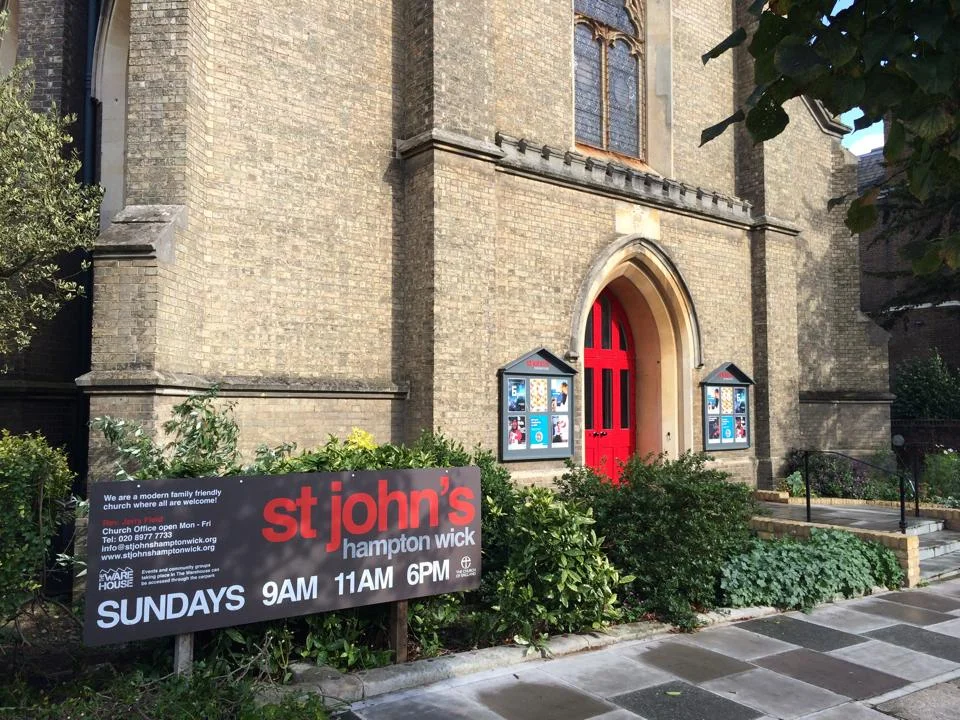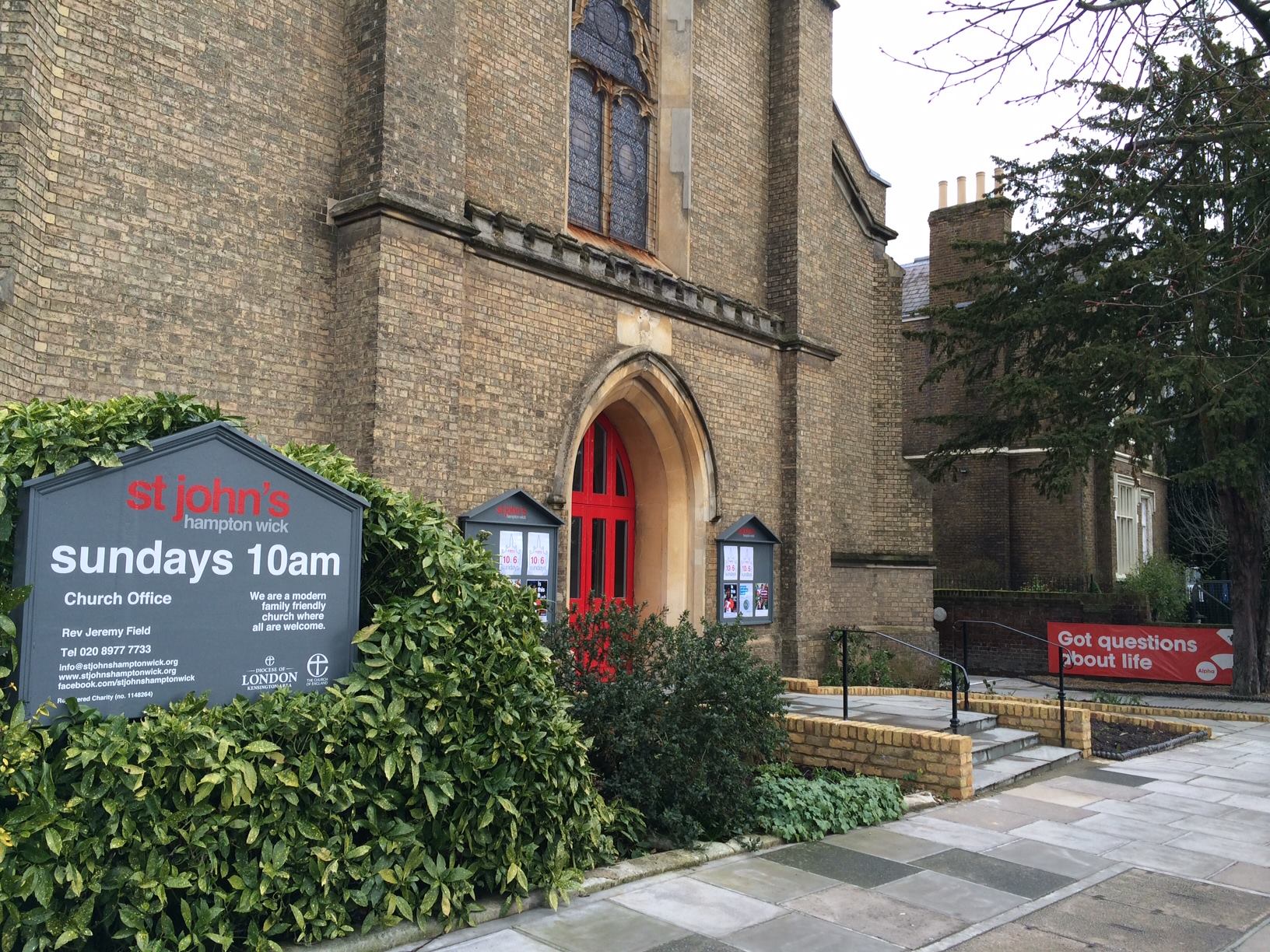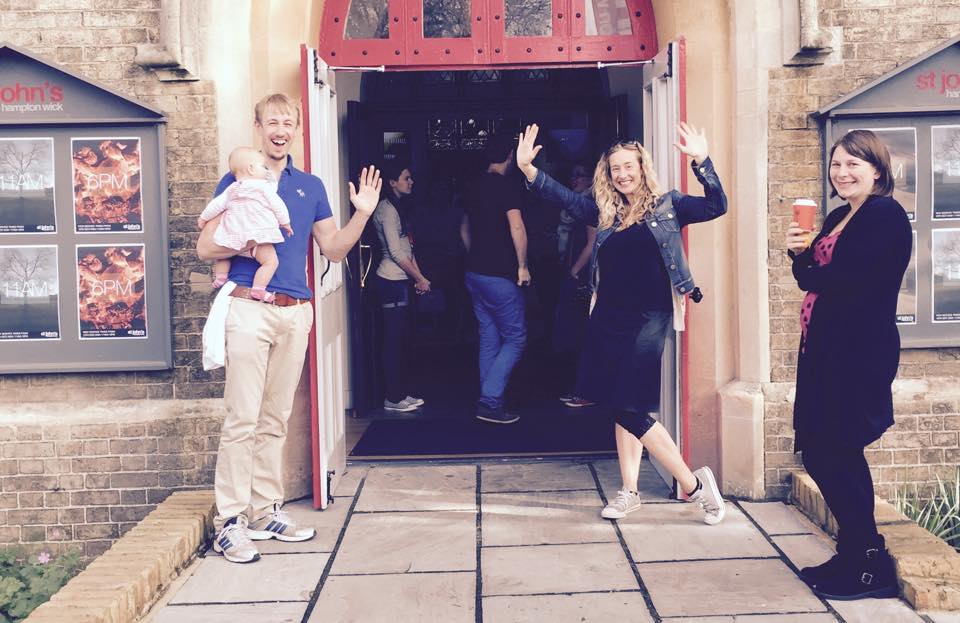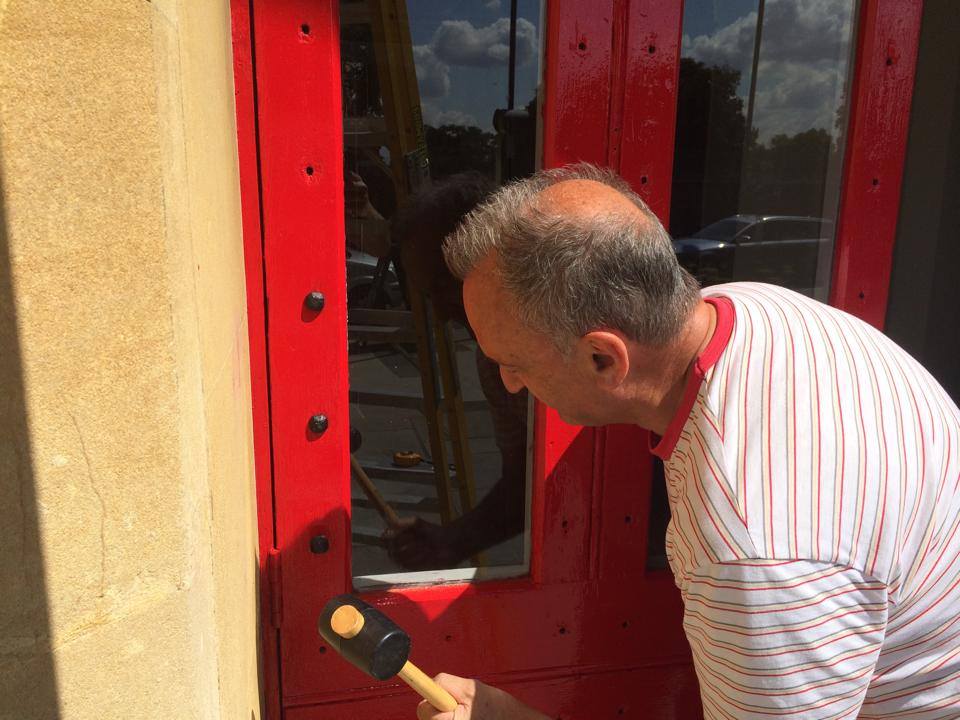It was a typically damp morning when I opened the gently rotting doors of St John’s church. Due to a complicated disaster - which we’ll talk more about later - this beautiful old church in the middle of our capital city had been closed for over five years. I had been ordained & apprenticed as a minister and was now being sent by my denomination to what many thought would be an impossible mission: seeing a dead church come back to life.
That was when I met Hazel.
Hazel (I have changed her name) was a formidable octogenarian in the local community. Baptized and married in the old St John’s church. Campaigner for various worthy causes - and a few unworthy ones too. Known to be friend of the children, but woe betide anyone whose friendship had expired!
“I don’t like your style of worship.” Hazel said to me, and my heart sank as hopes of winning her over disappeared. “But what I really don’t like, is an empty church.”
Over several months, Hazel got to know us - this new ‘church planting’ team sent from one of the largest churches in our denomination. Gradually, she conceded that no matter what crazy methods we were employing, we were bringing children and their parents back to ‘her’ church. By crazy, she meant anything involving a guitar! “If the kids are coming,” she explained, then “I’m for this craziness. And I’m for you.”
The nation was England. But this could have been any Western nation. The denomination was Anglican. But this could have been any denomination. The issue of closing churches and re-opening them well is something which affects us all. It has become the focus of my life.
To engage in the social, spiritual and ‘Kingdom of God’ importance of closing churches, think about this. Christians follow a dead, alive God. If Jesus Christ had not actually died - if he was hiding in a cave for three days for instance - then the whole premise of the global church is a mockery. If Jesus is not really alive right now - as alive as you or I - then once again, our faith is in vain.
In all Christian traditions including liberal, conservative, orthodox, catholic, we find some way to recognize a further call to be dead, alive people. The mark of discipleship in each case is the follower who is willing to die to themselves and live only for God. Hero saints like Mother Teresa of Calcutta, the evangelist Billy Graham, activist Martin Luther King Jr. or perhaps even today’s Pope Francis I or P.E.A.C.E. Plan leader and Pastor Rick Warren, are but a few examples of those who put their trust in the providence of God and the plans of an unfolding heavenly Kingdom. We look up to those who seem to truly believe that even death is not too strong for our God and we follow (imperfect as they may be) their example as they follow Christ.
If any of that is true, where does that leave the dead, alive church? What happens when church communities slow down, break up or close? How could we live through those moments, without actually dying ourselves? How can those holding a vision for new life in a church, interact with those who are mourning or struggling to release a vision they have held on to, for generations? What difference would it make, if we could close churches well, in the hope of new life?
I grew up in traditional Canadian Presbyterian and Anglican churches but it was not until I was a young graduate student in England that I found a living relationship with Jesus Christ. I was married in a French Catholic church (to my French Catholic wife) and currently serve in a large Canadian evangelical church. But there was one experience which most shaped my own calling, and one which has inspired this work: I watched and was part of a time in England when as a nation, we closed over 8,000 historic church buildings. In my denomination (the Church of England) and network (Holy Trinity Brompton, home of The Alpha Course) we realized that these buildings were not only bricks and mortar, they represented centuries of faith, vision, worship, prayer and hope for this other-worldly Gospel message that we steward. As we watched the buildings close and faithful communities with them, our hearts burned for a solution.
I will never forget that day when as a young advertising executive in London, I sat in church and heard about how our denominational authorities seemed unstoppable in the way they were selling buildings. I heard about how many buildings had been turned into apartments or shops and how the church seemed to have lost all hope that they could ever be used as churches again. I came to understand more about the finances in our denomination - cash poor but buildings rich. I learned about how a situation of denial and unbelief that ‘that building could ever close!’ turned to into a veritable fire sale of the nations’ heritage.
I believe that in every aspect of society, we have leaders who we admire and follow because we have seen them respond first hand to difficulty. It was exactly this observation that first endeared me to two Anglican leaders: Sandy Millar and Nicky Gumbel, pioneers of Alpha and its home church, Holy Trinity Brompton. Sandy had carefully studied world movements in the 20th Century church and built up a style of worship which appealed hugely to thousands of young professionals like me. This style was marked by openness to prayer. There was a new passion for music, worship and teaching that engaged not only our minds, but our hearts. I was hugely attracted to this. I was also very attracted to the many beautiful young women at this church - one of whom later became my wife!
Our church was in many ways like any other parish church in the land - big pillars, pipe organ and surrounded by verdant gardens in the city centre. What marked out HTB was its vision, to play its part in the ‘re-evangelization of the nation, and the transformation of society’ For me at the time, this sounded like totally foreign language. Evangelism was something that other denominations did - embarrassingly! But what about the transformation of society? I had just entered into the beautiful age in my life when I began to realize that selfish gain was probably not going to be enough to run my life on. I had learned some kind of altruistic instinct from my parents and childhood, but the buzz of city life and my then work in the advertising industry was beginning to beat that out of me. Even so, the idea that society needed transforming - that somehow it seemed to decay or break, was beginning to affect my world view. If church was something that could really help, and renewing faith was the fuel in the engine, then perhaps this was worth looking into further.
It was then that I came across this phenomenon of The Alpha Course. I learned that ‘Alpha’ had started a dozen or so years earlier and that since that time, nearly every global denomination had offered (and was allowed) to play its part in developing a new course for introducing the Christian faith in the context of discussion, food & worship. There were Catholic Cardinals and Evangelical preachers - Russian nuns and hipster Seattle-types, all engaging in this new tool. Or was it a movement? Whatever it was, it seemed far from the denominational differences I had imbibed as a child.
Something about the lives of these people attracted me hugely and by this point, I promise you it was beyond just the girls! I snuck in to the back of a Bible study and wanted to see what these people were doing when no one was looking. I was aghast to learn: they were doing the same thing behind closed doors, as they were out front! Eating together, making space for questions, always speaking well of other churches, worshipping God with passion.
I wanted to invite this renewal of faith, in my own life. I made friends with a guy called Alex, the son of an Anglican clergyman and who later worked for the same advertising agency as me - I thought that with a father as a minister, he really ought to know better. But he and I agreed that whatever ‘these people’ had, we had never had it. But we wanted to now. In the back of a stuffy church basement not far from HTB’s main building, I remember praying out loud with some one else for the first time in my life and asking “Lord Jesus Christ, if you are who these people say you are, then please come into my life!”
God answered that prayer for us and we began to be caught up in the buzz of one of the most exciting churches in this bizarre country of my grandparents. A country I later realized had exported language, commerce, political systems and… faith. We were part of a moment in British history when local churches began to come alive through the exact same renewal pattern we had been part of ourselves. We were swept up in a season when thousands and thousands of our colleagues in this world city began giving their lives to Jesus Christ and… filling up the buildings!
Here was the contrast: over 8000 buildings had or were closing, set against dozens of churches filling up with some kind of renewal movement. Then one day, came that moment.
“Over my dead body will another one of these buildings be closed,” said Nicky Gumbel in the Sunday sermon that day. I found myself strangely convinced of the many arguments made, concluding that the idea that buildings + faith + transformation = something good. Something possible. Something worth giving my life for. I found myself standing up with dozens of other young men and women who responded, “Over our dead bodies too.”
This blog, my doctoral work and much of my work in ministry is about that passion and the practical necessities of seeing this vision for Dead Alive Churches turn into action. This work is based on hundreds of conversations with church & denominational leaders, politicos and urban planners and ordinary people who long to see churches come alive again. It is informed by my own personal experience in pastoring and seeing 3 churches re-started in old buildings. It is inspired by dynamic networks like the European Church Planting Network, the U.K.-based HTB Network, the U.S. Exponential Conference, Church Planting Canada and a raft of great blog communities that I will refer to throughout these pages. I want to focus on three main perspectives, that of: a) older congregations, b) the wider world and c) new church initiatives. I want to show you how each one needs the other two, but how easy it is to pass each other like ships in the night. What keeps me up at night is the degree to which established congregations and denominations have such little good connection with the many inspiring networks bubbling up in their wake. To help these world understand each other is one of my primary aims.
The first aspects of my more formal investigations are aimed towards that of the older, closing or some cases literally dying congregation. This is a group of faithful men and women who have likely been pursuing a time-honoured and tested tradition of faith. This is the kind of faith that moved entire languages across Oceans, built hospitals, orphanages, community centres - the kind of people who had seen miracles. The period of observation may have been centuries or just a few short years - it is surprising how quickly an expression of church can go stale or impotent. The most important symptom is that the church has completely stopped growing - there have been no new people for some considerable time. But other early symptoms are equally deadly - an environment in which innovation is stifled, relationships are poor and people seem to be mysteriously and consistently crushed. These congregations will have spent countless hours and years in the struggle to adapt to a changing culture. Perhaps there is a quiet sense of ‘we’re not winning.’
This is the most important group and I have so many stories to tell from around the world, where congregations like this have made valiant and wonderful decisions to pass on the heritage they received. But they had to lay so much down, first. Closing churches well is a first aim and with it comes everything else.
If you are a leader of a struggling church, this project is for you - but please, not just this section. My hope is that in as you journey with me in the whole of Dead Alive Church, you will have a practical and pastoral guide for engaging the huge emotions that this quest may stir up.
New church planters, this first work is also the most important for you. If you can understand the emotions and history of a congregation reaching the end of its natural life, you will be better equipped to make the kind of genuine friendships that will help you see new life begun. If you do this poorly - and perhaps you’re reading this after a wipe-out - you will find yourself hiding in a school hall while the massive 19th Century barn-of-a-church in your city centre is turned into a new pine furniture shop.
Denominational leaders, this is also the most important section for you. You may look at my Anglican background and say ‘well yes, you have Bishops.’ Perish that thought. There is no denominational structure in the world that makes this task easy. In every situation, there are structures and some lines of power, but far more lines of influence. You are the pace-setters, the vision-casters and I believe in you! You were called by God, chosen, elected, or appointed to steward the resources of money, people, buildings and vision and you face some of the hardest decisions. Your actions can have some of the greatest impact! Throughout this project I will introduce you to other denominational leaders who have trodden this path. I hope you will be encouraged for hard conversations and equipped to lead them well.
The second perspective is that of the wider world which is simply asking ‘who cares?’ It takes only a quick search of any major newspaper in the Western World to find articles still being written about the decline and occasional success (or scandal) of traditional forms of church. Journalists come pre-wired to believe that churches and their buildings remain of some societal importance. In this second part of my work Why new churches in old buildings I will endeavour to outline the secular case for Christian churches in the physical centre of local communities.
This is an aspect of church renewal that both closing and re-opening churches tend to skip over.
Older churches begin by arguing that ‘of course society needs the church - it’s always been that way!’ but this argument leaves open the easy rebuttal of ‘what good does the church do, anyway?’ A typical list of worthy causes is then dusted back off - but the annual turkey supper and clothing drive just don’t seem to have the same impact as they used to. A secular case for the church is often poorly prepared or presented, even if good evidence is still available.
New churches tend to avoid the opportunity to setup in the centre of communities. Many new churches will argue that buildings and locations are scarce, or that they have tired of ‘wasting’ attempts at convincing established churches of their worth. They argue a Biblical and faith-perspective rationale for new churches (which I share hugely!) but are less strong at arguing the case for why society should want churches, irrespective of its supposedly belief-neutral bias.
Engaging in this part of my exploration will (I pray!!!) help churches who are closing face the reality that they may no longer be delivering any substantial or tangible societal good. In certain jurisdiction, this is further challenged by tax and charitable structure legislation. This section also helps new churches sharpen their message and make the case to resource brokers of all kinds, that what they are doing is valuable.
The third and final focus Great Conversations hopes to speak to new church planters, initiatives, teams and movements. I want to convince you to fight for the opportunities presented by the closing of established churches. If you go into this thinking ‘if I follow his recipe, somebody will give me a building’ I guarantee you, that won’t happen. To you I am speaking the language of the fire of the Kingdom of God and the passion burning in my heart that every person on earth be presented with an attractive opportunity to find and follow Jesus Christ. Many of us have focused on the paradigm-shifting work in missional communities. By talking about buildings, that missional work is in no way jettisoned! Rather, it is set alight as we realize that the answer to any prayer for any kind of church is that eventually, it would grow. A growing church eventually runs out of space. Think of Acts Chapter 20 and Eutychus who had to sit on the window-sill of that early church gathering place. Paul’s preaching was going ‘on and on’ (v.9) and dear Eutychus fell from the third story of the building and died! Was this not a cry for a better building!
As a church planter, I find some of the most inspiring and exciting writing in the Christian world, is aimed at us. Writing which reflects on the ancients and which challenges us for now. In engaging this work, I want to draw you in and reference many of these new giants in world church thinking. But what is unique about this work is how I hope you will see these movements alongside the established patterns of the church. If you begin to learn to express new movements in language that the historic church can use as its own fuel, then we begin to light an unstoppable fire, together.
Established and older congregations, this section is also aimed at helping you understand the bizarre world of 21st Century church planting. This category did not exist in the Sunday School of your youth (actually it did and we want to tell you that you just ignored it, but let’s leave that one aside! Can you laugh?) and I recognize how foreign, frightening, bizarre and other-worldly some of this language may seem.
Throughout the formation of this project, I have also been chairing a conversation in Canada in which more than 30 denominations, movements and interest groups for the church have been studying together the issue of closing and re-opening church buildings. In gathering this group, I first asked ‘are you having this conversation already?’ The answer I kept receiving was, ‘no, but we want to- and we need it now.’ My next questions were, ‘What resources do existing denominations and congregations have, to help close churches? Are they relating to new movements well, or at all?’ The answer to those questions should not surprise you - I heard again and again from regional and local leaders that they were not hearing each other and even if they did, they often failed at bringing good transition projects to fruition. What great and amazing resources that are available are often hard to find - I hope with this work to champion the causes of those amazing thinkers, and promise to do my best in this blog to give you access to what I find.
As with any introduction, I am making huge summaries and generalizations that you will have to bear with me further to investigate! This is just the beginning of the formal part of this work and it may seem to go slowly. I am hugely, hugely thankful to the early interest of Asbury Theological Seminary in supporting me through doctoral scholarship in this work and while this blog provides me an informal way of sharing as I discover, I am relying on the wisdom of Asbury to help guide me as this content is shaped into a more formal structure. There are some amazing success stories of where this kind of discussion is happening already. I hope to tune you in to those and to help you have those discussions more, together. There are also some terrible, tragic stories which are too horrific to tell here. Perhaps you are the victim of one of those church explosions and you are looking for hope here - I pray that you find it! I also hope that you find I am sensitive to your own history - will you bear with me as I explore these sensitive issues? I am not writing here because I am the most experienced person in this field - I am writing it mainly because I know in my bones that it needs to be done and I have had a ‘here I am Lord, send me’ moment of calling. I hope to give you something of myself in this unfolding story, but even more of those who have inspired me.
As we journey into this work over the next few years, my prayer is that in engaging here, you will be enabled to have these conversations well, yourself. My hope is that this project becomes laid out in a way that gives you access to the perspectives and tools you need to close churches well, make the case for new ones and practically see them come to life. When you look out at the buildings heritage of the global church and the huge opportunity for transition and mission in the 21st Century, perhaps you will say, ‘over my dead body, too.’
In using the cover photo (top of this post) of the closed building of St John's Hampton Wick, I thought you might enjoy seeing some images of what it became! Click here for similar images from Lakeside Downtown or Holy Trinity Swiss Cottage or any of Holy Trinity Brompton's related churches.


